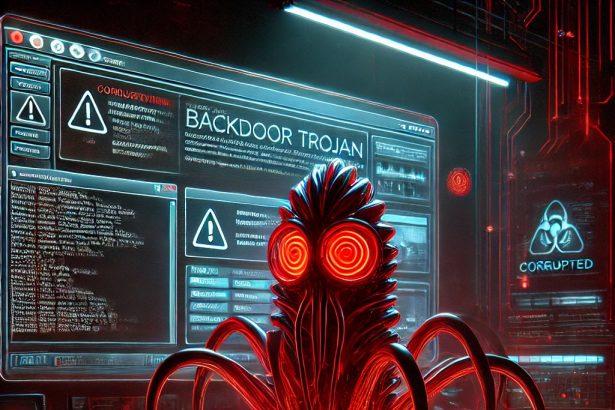PXA Stealer is a Python-based information-stealing malware that has rapidly spread worldwide since late 2024. It targets browsers, crypto wallets, VPN/FTP clients, and other applications that handle sensitive data. Operated by Vietnamese-speaking cybercriminals, this malware has compromised thousands of devices across dozens of countries — harvesting hundreds of thousands of passwords, millions of browser cookies, credit card data, and more.
Threat Overview
| Attribute | Details |
|---|---|
| Threat Type | Infostealer / Trojan |
| Detection Names | Varies by antivirus vendor |
| Symptoms of Infection | No visible symptoms; may include decoy errors, slowed browser performance, or unknown background processes |
| Damage / Distribution Methods | Delivered via phishing ZIP attachments; uses DLL sideloading to inject Python-based malware and extract sensitive data |
| Danger Level | High – steals credentials, browser data, crypto tokens, VPN/FTP details |
| Removal Tool | SpyHunter |
Detailed Evaluation
How I Got Infected
Infection typically begins with a phishing email or malicious website offering a ZIP file disguised as a software installer — for example, a PDF reader or Word processor. Inside the installer is a legitimate signed application bundled with a malicious DLL. When executed, the DLL is sideloaded and launches PXA Stealer in the background while presenting a harmless or fake document to the user.
What Does It Do
Once active, PXA Stealer disables security tools and scans the system for credentials, cookies, autofill data, and crypto wallet information stored in browsers such as Chrome, Firefox, and Edge. It also extracts information from VPN clients, FTP software, messaging platforms, and development tools. The data is then compressed into ZIP files labeled with the device’s IP and hostname. These files are transmitted through Telegram bots to cybercriminal-controlled servers.
Should You Be Worried for Your System
Yes. This malware not only steals sensitive credentials but also facilitates identity theft, crypto wallet hijacking, and unauthorized account access. Because it operates silently and uses encryption and Telegram-based exfiltration, infections often go unnoticed until significant damage is done. PXA Stealer is part of an underground malware-as-a-service ecosystem, allowing threat actors to buy and deploy it easily — putting both personal users and organizations at risk.
Manual Removal for PXA Stealer (For advanced users)
Step 1: Enter Safe Mode with Networking
Since info-stealers may resist removal while active, booting into Safe Mode helps disable their execution.
- Windows 10/11:
- Press Win + R, type msconfig, and hit Enter.
- Go to the Boot tab and check Safe boot → Network.
- Click Apply → OK and restart your PC.
- Windows 7/8:
- Restart your PC and keep pressing F8 before Windows loads.
- Select Safe Mode with Networking and press Enter.
Step 2: End Malicious Processes in Task Manager
- Press Ctrl + Shift + Esc to open Task Manager.
- Look for suspicious processes (e.g., randomized names, high CPU usage, or unknown apps).
- Right-click on them and select End Task.
Common info-stealer process names include StealC.exe, RedLine.exe, Vidar.exe, or generic system-like names.
Step 3: Uninstall Suspicious Programs
- Press Win + R, type appwiz.cpl, and hit Enter.
- Look for unknown or recently installed suspicious software.
- Right-click the suspect entry and select Uninstall.
Step 4: Delete Malicious Files and Registry Entries
Info-stealers leave behind hidden files and registry keys to ensure persistence.
- Open File Explorer and navigate to:
C:\Users\YourUser\AppData\LocalC:\Users\YourUser\AppData\RoamingC:\ProgramDataC:\Windows\Temp
- Open Registry Editor:
- Press Win + R, type regedit, and press Enter.
- Navigate to:
HKEY_LOCAL_MACHINE\Software\Microsoft\Windows\CurrentVersion\RunHKEY_CURRENT_USER\Software\Microsoft\Windows\CurrentVersion\RunHKEY_LOCAL_MACHINE\Software\Microsoft\Windows\CurrentVersion\RunOnceHKEY_CURRENT_USER\Software\Microsoft\Windows\CurrentVersion\RunOnce
- Look for randomized or suspicious registry keys (e.g.,
StealerLoader,Malware123). - Right-click and delete any malicious entries.
Step 5: Clear Browser Data and Reset DNS
Since info-stealers target browsers, you need to clear stored credentials.
Clear Browsing Data
- Open Chrome, Edge, or Firefox.
- Go to Settings → Privacy and Security → Clear Browsing Data.
- Select Passwords, Cookies, and Cached files and click Clear Data.
Reset DNS
- Open Command Prompt as Administrator.
- Type the following commands, pressing Enter after each:bashCopyEdit
ipconfig /flushdns ipconfig /release ipconfig /renew - Restart your computer.
Step 6: Scan for Rootkits
Even after manual removal, some info-stealers may hide as rootkits.
- Download Malwarebytes Anti-Rootkit or Microsoft Safety Scanner.
- Run a deep scan and remove any detected threats.
Step 7: Change All Passwords & Enable MFA
Since info-stealers extract credentials, immediately update passwords for:
- Email accounts
- Banking and finance sites
- Social media
- Cryptocurrency wallets
- Business and work logins
Enable two-factor authentication (2FA) to prevent unauthorized access.
Method 2: Automatically Removing PXA Stealer Using SpyHunter (Recommended)
(For users who want a fast, hassle-free solution)
SpyHunter is a professional anti-malware tool capable of detecting and removing info-stealers, trojans, keyloggers, and spyware.
Step 1: Download SpyHunter
Click here to download SpyHunter
Step 2: Install and Launch SpyHunter
- Locate the SpyHunter-Installer.exe file in your Downloads folder.
- Double-click to start the installation.
- Follow the on-screen instructions and launch SpyHunter after installation.
Step 3: Perform a Full System Scan
- Click “Start Scan” to analyze your system.
- SpyHunter will detect any info-stealers, trojans, or keyloggers.
- Click “Remove” to delete all detected threats.
Step 4: Enable Real-Time Protection
- Go to Settings and enable Real-Time Malware Protection to prevent future infections.
Prevention Tips: How to Stay Safe from Info-Stealers
- Avoid Cracked Software & Torrents – They are a major infection source.
- Use Strong, Unique Passwords – Utilize a password manager.
- Enable Two-Factor Authentication (2FA) – Reduces the risk of stolen credentials being misused.
- Keep Software & OS Updated – Patches fix security vulnerabilities.
- Be Wary of Phishing Emails – Do not open attachments from unknown senders.
- Use an Antivirus or Anti-Malware Tool – A good tool like SpyHunter helps detect and remove threats.
Conclusion
PXA Stealer is a dangerous and stealthy infostealer that can compromise nearly every aspect of your digital identity — from browser sessions and email logins to cryptocurrency wallets and financial accounts. Its distribution via fake installers and its use of DLL sideloading make it hard to detect without professional-grade tools. If you suspect your device is infected, remove it immediately using a reputable antimalware solution like SpyHunter and reset all potentially compromised accounts.




